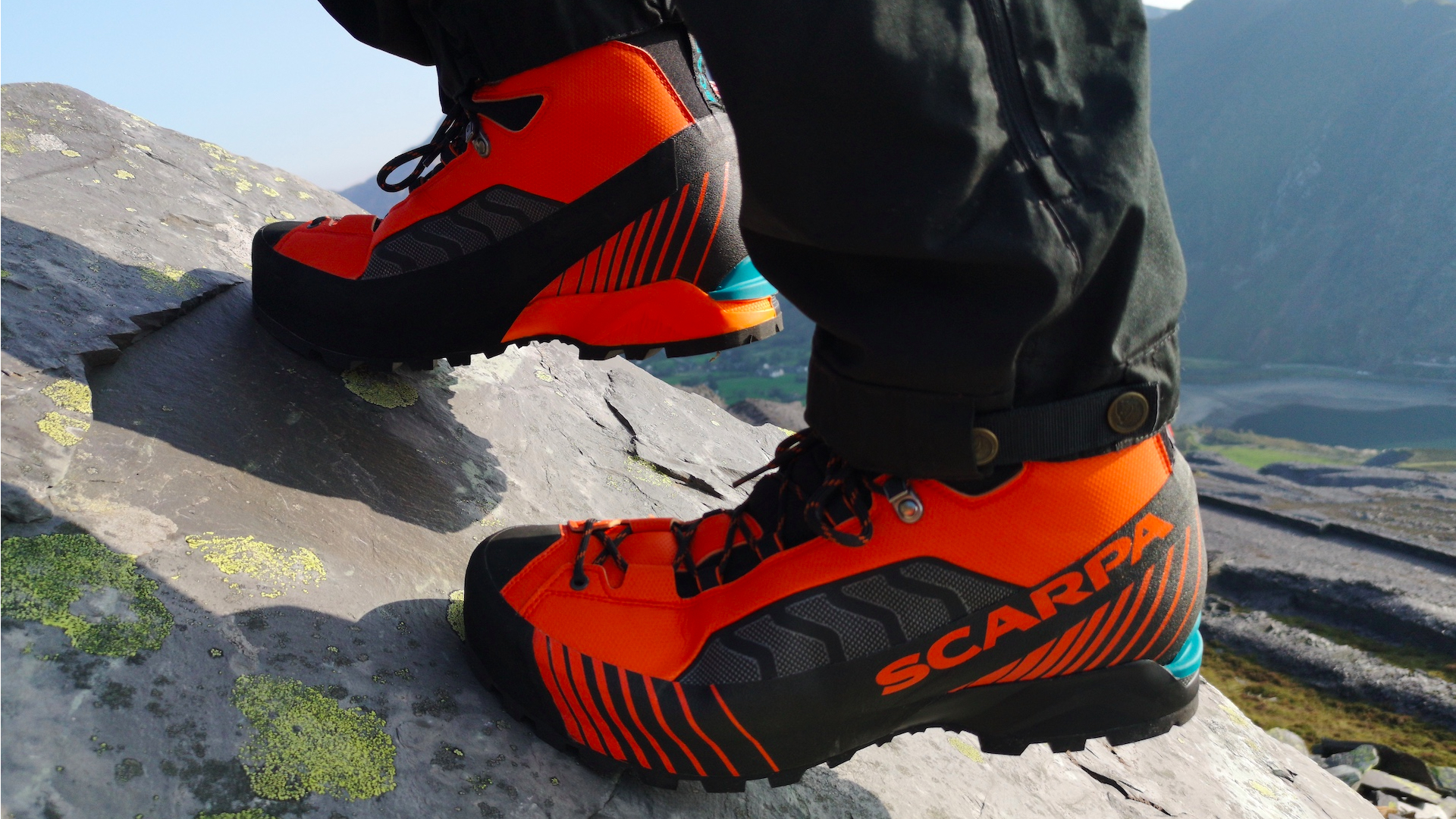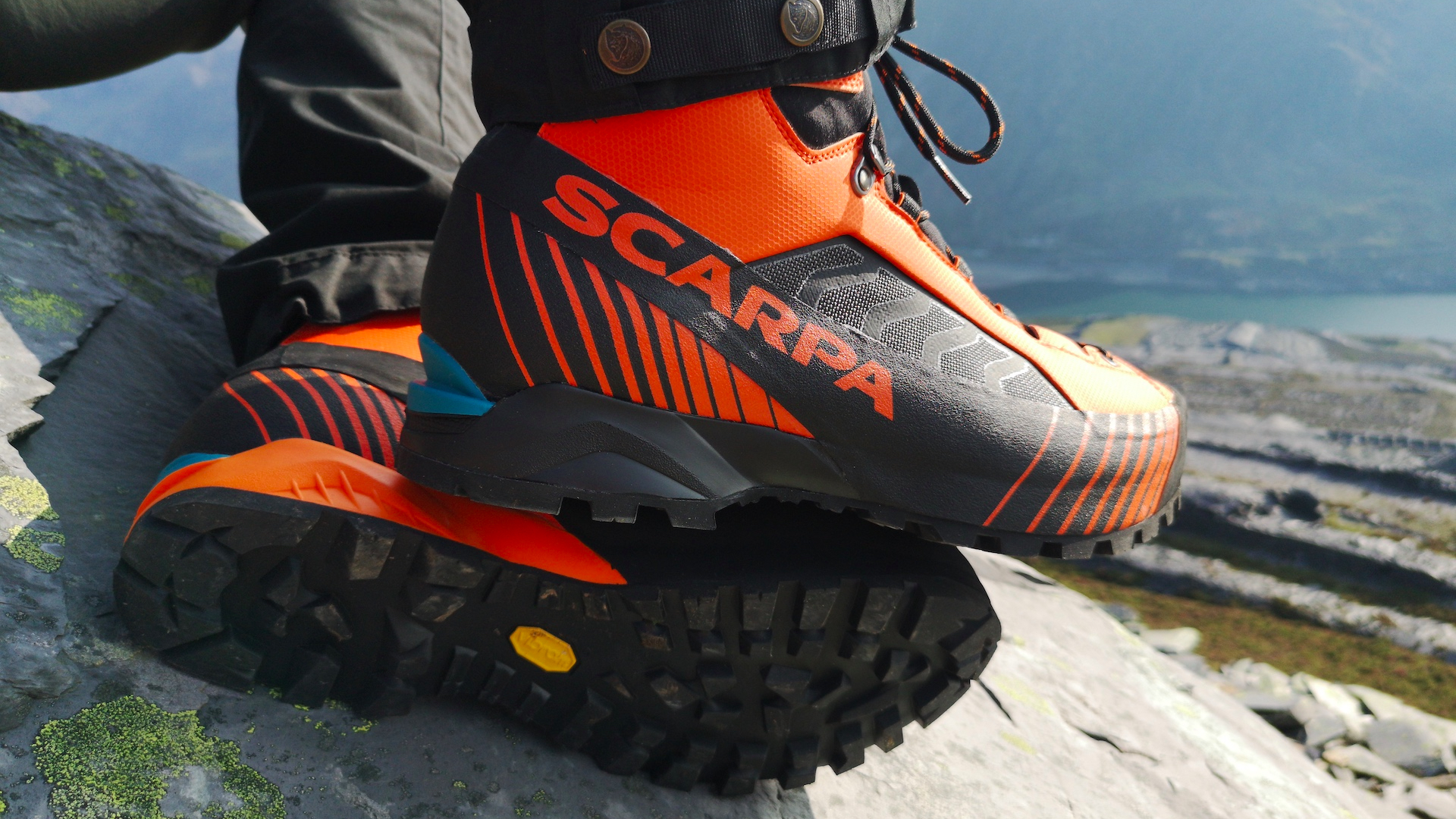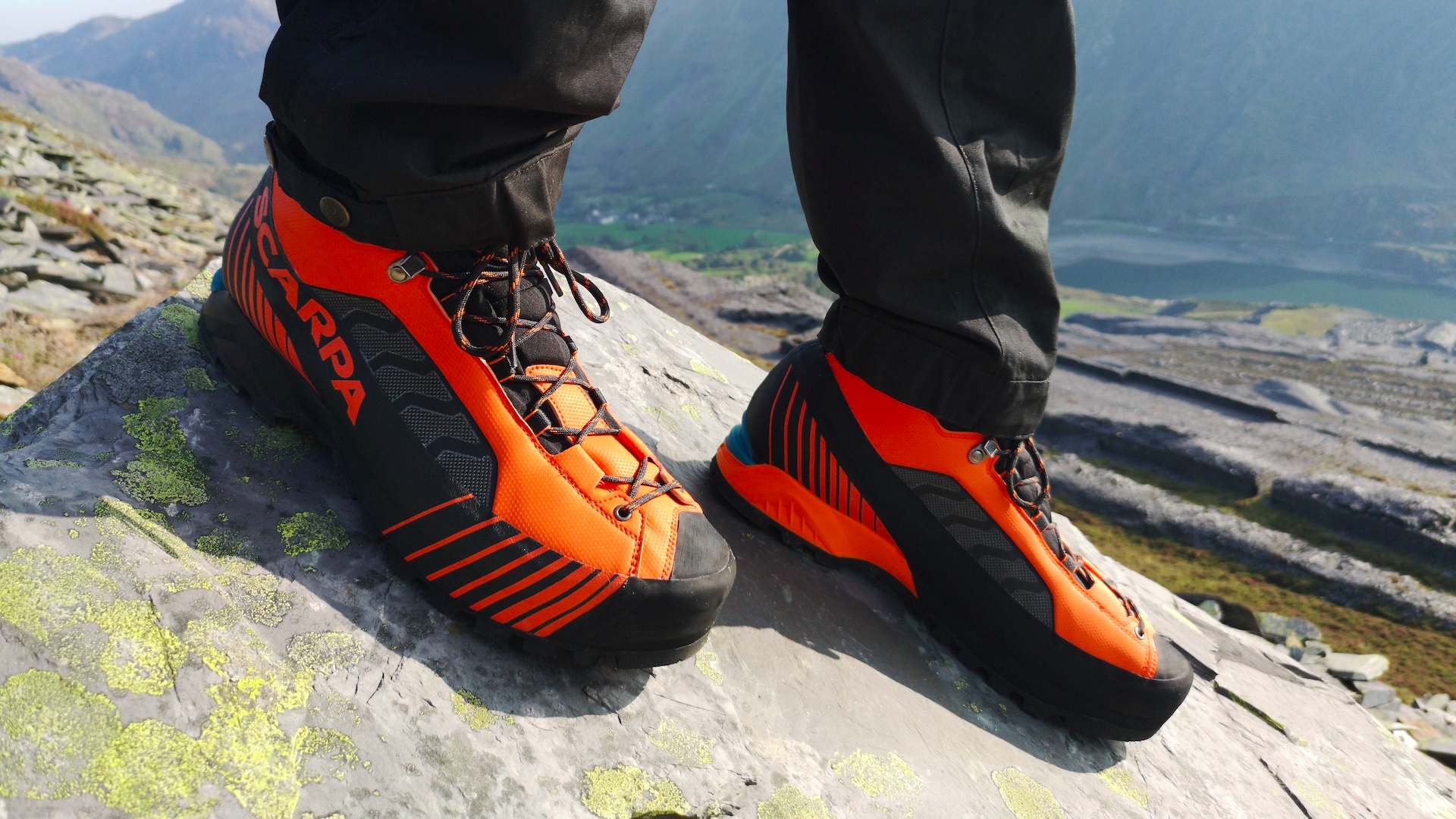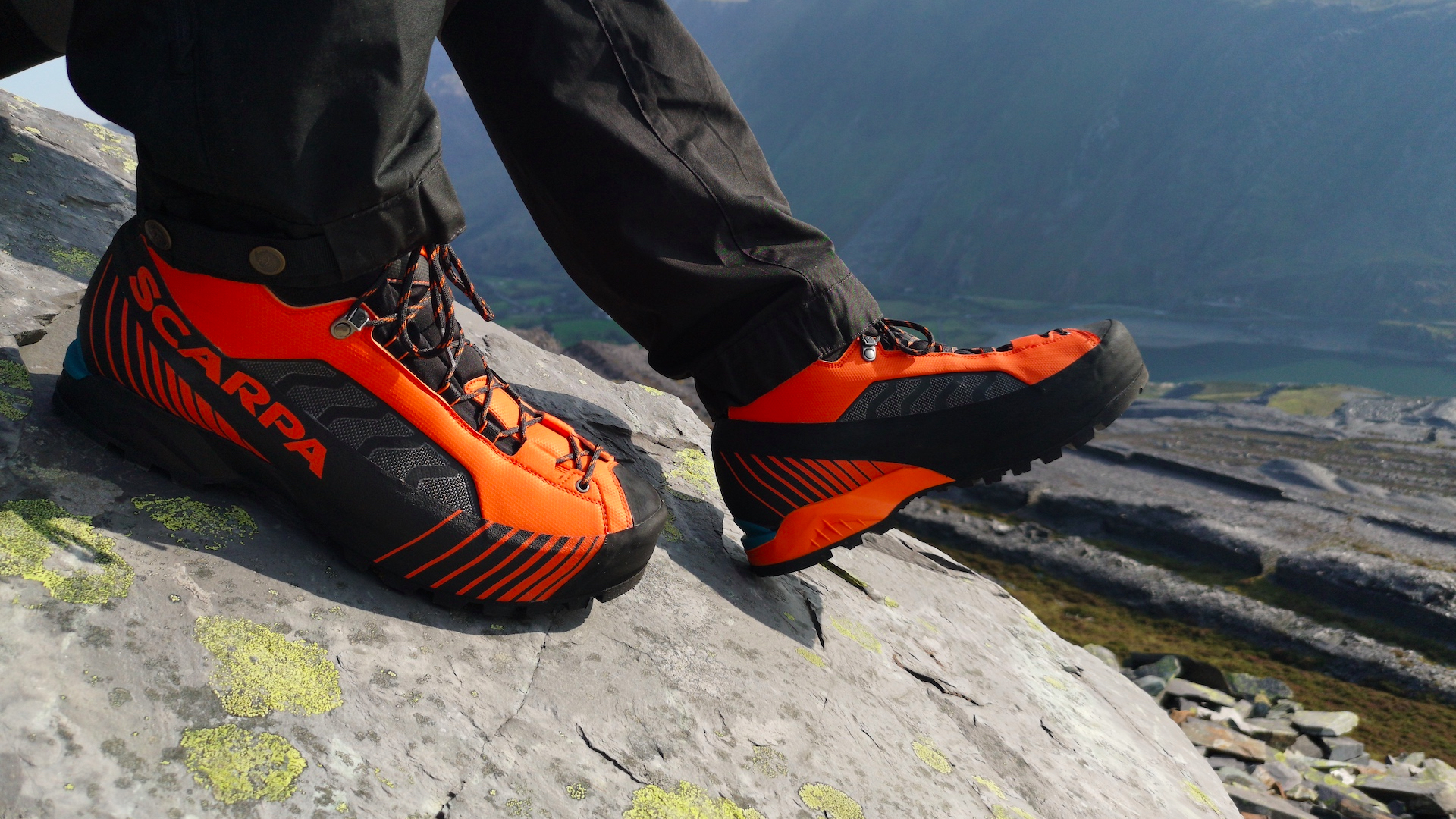Advnture Verdict
The Scarpa Ribelle Lite HD boot is a lightweight and capable all-season scrambler. If you’re taking on mixed mountain routes that involve big miles and some testing scrambles, these are a strong choice. They feel lightweight and precise but are also very capable. They can even be used year-round thanks to their stiffness and C2 crampon compatibility, though you might want to add a plusher insole and your thickest socks for colder days out.
Pros
- +
Lightweight
- +
Precise
- +
Agile
Cons
- -
Slightly unusual fit
- -
Not the warmest for winter use
- -
Not the best cushioning underfoot
You can trust Advnture
Scarpa Ribelle Lite HD: first impressions
Scarpa’s Ribelle boots are the new kids on the winter hiking boots block – they’ve only been part of the brand’s lineup since 2017, so in terms of mountaineering lineage they pale into comparison with well-established heavy hitters like the much-loved Scarpa Charmoz or Manta series. Both of those models have been used and abused for decades now and have established a near unassailable reputation amongst mountaineers all over the world.
• List price: $340 (US) / £290 (UK)
• Weight per boot (size UK 12 / EU 47 / US 13): 771g / 1lb 11oz
• Materials used: Upper Tech Fabric + Microtech, Membrane H-Dry Lamination + 37.5 by Cocona, Outsole Vibram Pentax Precision III
• Sizes: Men’s EU 40-48; Women’s EU 37-42 (both including half sizes)
• Colors: Tonic / Cocoa-Moss
But what the Ribelle lacks in tradition and hiking boot heritage it makes up for in technological innovation. In fact, it caused a real stir even when it was launched, as Scottish climber Uisdean Hawthorn wore a pair of Ribelle Techs when he completed the fastest-ever winter traverse of the Cuillin ridge on Skye, in just under five hours.
The Ribelle Lite is a less hardcore version of the Tech with an emphasis on mountain walking and scrambling rather than out-and-out mountaineering. It is still C2 crampon compatible though, making it well-suited to winter use. And just like the Tech, it’s impressively light – amongst the lightest B2 boots on the market. In fact, the only rivals we know of that can beat it on the scales are the Arc’teryx Acrux LT and the Mammut Taiss Light Mid GTX.
The Ribelle Lite is intentionally slightly less technical than those alternatives though, with a focus on fast-paced mountain days rather than the really steep stuff, like mixed and ice climbing routes. It uses Scarpa’s ARG last shape, which has low volume technical precision, but a noticeable toe spring, giving a much more natural and fluid gait. The midsole also features dual-density PU cushioning for a more forgiving feel underfoot, without sacrificing performance or stability.
The upper of the Ribelle Lite is made from microtech fabric with an unusual direct lamination H-Dry membrane. According to Scarpa, this creates a fully waterproof and completely non-absorbent boot that is also highly breathable. It’s a very different construction to most leather four-season boots.

The boot also features Scarpa’s sock fit tongue – something it has in common with some of the brand’s best three-season hillwalking boots, like the excellent Scarpa R-Evo. It works well with the extended lacing system to give a snug, close fit.
Finally, the upper and the midsole are wrapped in a PU Tech layer for added abrasion resistance without the weight of a conventional rubber rand. It also gives the boot a very striking look that is bound to attract attention from your mountain buddies.
Scarpa Ribelle Lite HD: on the trails

For a B2 boot, the Ribelle Lite feels impressively light and agile on the feet. We attributed this not only to its low overall weight but also to the stiff-yet-springy midsole, which has slightly more flex than most 4-season boots.
This works well for rock-hopping and scrambling, but also helps for general hillwalking on flatter ground. The Vibram outsole offers great all-round traction. It has a slight rocker for a more natural walking motion, but when the terrain gets tougher there’s also a front climbing zone for precise placements.
In terms of fit, they are a little unusual. They seem to have a relatively slim heel and a narrow midfoot, with a broader forefoot that tapers at the toe. But although the toe box isn’t particularly wide, it is quite deep, so the front of the boot has quite a high profile. This gives a bit more wiggle room for cold toes and thicker socks, which is a good thing in winter conditions, since the uppers aren’t insulated. It does occasionally make it tricky to jam the toe into smaller rock pockets, though. Still, that’s about the only negative of what is otherwise an excellent scrambling boot.

The padded ankle cuff feels supportive yet unrestrictive, and as mentioned up top, the boot also boasts Scarpa’s excellent “sockfit” softshell tongue, which hugs the foot brilliantly without feeling uncomfortable. The uppers are undoubtedly lightweight but feel pretty tough for a synthetic boot and the construction means there are minimal seams or stitching, which is usually a plus for long-term durability.
The midsole features a dual density PU construction for added cushioning, but it’s inevitably a lot firmer than a lightweight and flexible 2- or 3-season hiking boot. Underfoot, we did find that on longer mountain days they start to cause a little fatigue, leaving us a little footsore – a common problem with almost all stiffened B1 and B2 boots. We’d recommend replacing the standard footbed with a specialist insole to aid comfort.
Given that Gore-Tex boots are so ubiquitous, we were interested to try an alternative waterproof-breathable technology, in the form of Scarpa’s H-Dry waterproof laminate. This represents a change from the original iteration of the Ribelle Lite, which featured an OutDry membrane. It’s a similar laminate, though, and proved to be perfectly satisfactory on test, keeping feet consistently dry and comfortable. The fact that the uppers also absorb no water can also be a benefit over suede or nubuck leather boots.
All in all, we were highly impressed. Given their capabilities, they are incredibly light. If you’re used to clumpy mountaineering boots, these will be a revelation – although we can see that in full-on winter conditions some might prefer a slightly beefier, warmer boot.
An outdoors writer and editor, Matt Jones has been testing kit in the field for nearly a decade. Having worked for both the Ramblers and the Scouts, he knows one or two things about walking and camping, and loves all things adventure, particularly long-distance backpacking, wild camping and climbing mountains – especially in Wales. He’s based in Snowdonia and last year thru-hiked the Cambrian Way, which runs for 298 miles from Cardiff to Conwy, with a total ascent of 73,700 feet – that’s nearly 2½ times the height of Everest. Follow Matt on Instagram and Twitter.


